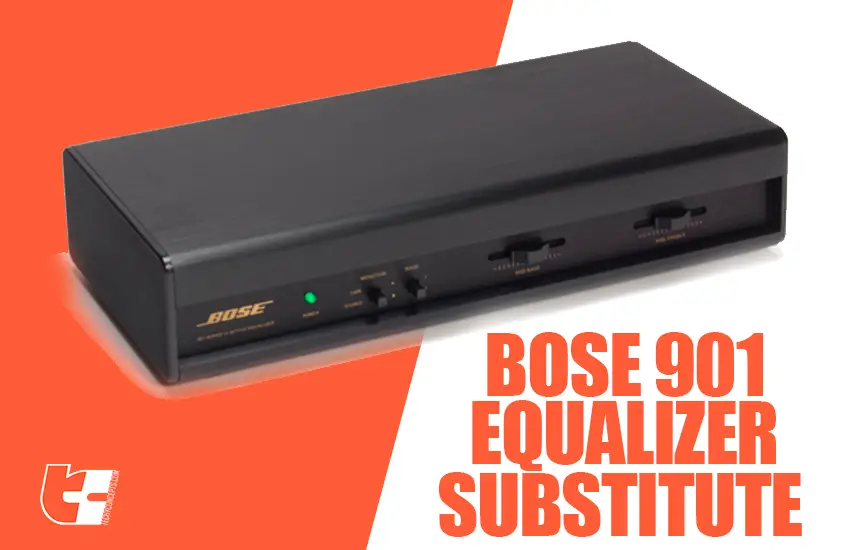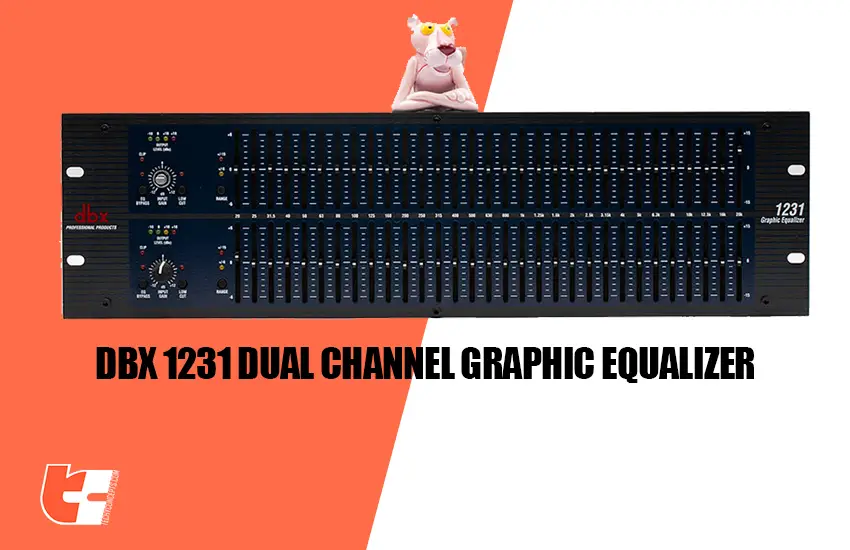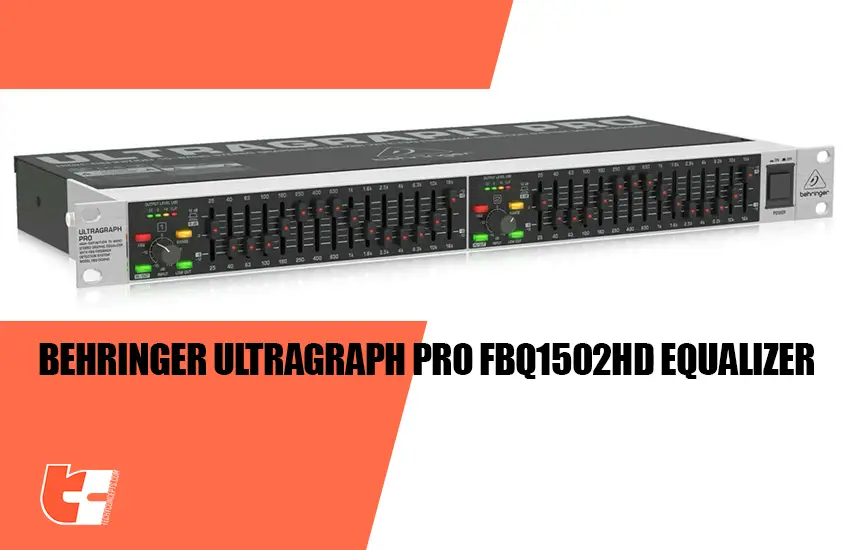Okay so, you don’t want to buy the Bose 901 equalizer and are now looking for alternative substitutes or replacement to go with your Bose 901 speakers, am I right?
Don’t worry, we totally understand your concern. But before we begin, just a quick heads up for you – using substitute equalizers can be challenging. They may lack the exact frequency adjustments and correction curves required to accurately reproduce the deep sounds of the Bose 901 speakers.
Furthermore, the Bose 901 sound system features a complicated combination of equalization and speaker arrangement. If you want to try replacing the original Bose equalizer with an alternative equalizer, it may result in a disappointing listening experience.
Well, we are still going to help you out with finding good Bose 901 Equalizer Substitutes. Just don’t blame us later if things go wrong and the final result is not satisfactory.

Factors To Consider When Choosing Bose 901 Equalizer Substitute / Alternative
The design, features and sonic characteristics of the Bose 901 speakers are unique and distinct. They were designed to work with the Bose 901 active equalizer, which plays a vital role in creating the sound generated by these speakers and to complete your home stereo system. The equalizer compensates for the 901 speakers’ not-so-perfect frequency response, which emits sound both directly and indirectly to create a more spacious and immersive soundstage experience.
If you want to change or replace the Bose 901 equalizer, keep the following points in mind beforehand:
1. Compatibility: Make sure that any alternative graphic equalizer you’re planning to go for is compatible with the Bose 901 speakers and the rest of your audio setup.
2. Frequency Response: The original Bose 90 Equalizer was designed in such a way to keep up with the speakers’ distinctive frequency response characteristics. To maintain the intended sound signature, a substitute equalizer must ideally offer equivalent adjustments and compensating curves for a similar sound quality.
3. Audio Quality: The Bose 901 speakers are noted for their distinct sound. Any substitute equalizer may modify this sound, therefore before making a decision, carefully consider the impact on sound quality.
4. Expert Advice: If you’re determined to find a replacement equalizer, consulting with audio gurus or music enthusiasts with experience and speaker equalization knowledge can provide helpful insights and recommendations.
Best 3 Bose 901 Equalizer Substitutes
We have chosen these 3 specific models based on their exclusive features, premium build quality, durable material, sleek design and commendable sound delivery. We are also going to discuss their key specifications, some advantages and a few of their limitations.
Without further ado, let’s begin.
1. DBX 1231 Dual Channel Graphic Equalizer

The DBX 1231 is a stunning equalizer known for its precision and versatility. It boasts an extensive range of features that cater to professional audio needs. With 31 bands of graphic EQ, the DBX 1231 enables precise adjustments across a wide frequency spectrum.
Its switchable low-cut and high-cut filters further improve its flexibility. The unit’s input and output level meters provide clear visual feedback during adjustments.
The inclusion of both XLR and TRS connectors guarantee compatibility with multiple devices. Not to mention, you can also establish connections wirelessly via Bluetooth.
In terms of build quality, the DBX 1231 is known for its durable construction, making it suitable for long-term use. The audio quality reproduced by the DBX 1231 is clear and sonorous, making it an excellent substitute to the Bose 901 equalizer.
Advantages:
- Intuitive interface and excellent audio quality.
- Dual Channels with XLR and TRS Connections
- 31 bands with ±12 dB boost/cut
- Selectable ±6 dB or ±12 dB range
- Switchable 40 Hz high-pass filter
- Input and output level meters
Disadvantages:
You may find the learning curve steep due to the numerous controls and features. If you’re looking for a simple and less sophisticated model than this 31-band DBX, you’ll love the next one on our list.
2. Behringer Ultragraph Pro FBQ1502HD Equalizer

The Behringer Ultragraph Pro FBQ1502HD is a compact yet powerful equalizer that offers diverse features suited for professional audio setups.
With 15 bands of graphic EQ, you can make detailed frequency adjustments. One of its spectacular features is the Feedback Detection System (FBQ), which identifies and suppresses feedback frequencies in live sound scenarios.
It also includes a low-cut filter to refine the final audio output. The FBQ1502HD features both XLR and 1/4″ TRS connectors, suiting different connectivity requirements.
While the build quality might not be as robust as some high-end options, its budget-friendly nature makes it an attractive choice for those seeking quality sound adjustments like that of Bose 901.
Advantages:
- 15 bands with ±6 or ±12 dB boost/cut
- FBQ feedback detection system
- Low-cut filter
- XLR and 1/4″ TRS connectors
- Compact design and budget-friendly.
Disadvantages:
The overall build quality may not be as robust and durable as some other high-end options such as the Bose 901 itself which may disappoint you. Otherwise, it’s pretty much worth the investment.
3. Ashly Audio GQX-3102 Equalizer

The Ashly Audio GQX-3102 is recognized for its transparent audio quality and reliable performance. With 31 bands of graphic EQ, it delivers precise control over audio frequencies.
The selectable ±6 or ±12 dB boost/cut range provides flexibility in shaping sound. The GQX-3102 features high-pass and low-pass filters that further enhance its capabilities.
Its XLR and 1/4″ TRS connectors ensure compatibility with various audio systems. The unit’s build quality is robust and dependable, suitable for demanding professional environments.
While it might be comparatively pricier than some alternatives, its transparent sound reproduction and versatile filtering options make it a solid investment for audiophiles and professionals alike.
Advantages:
- 31 bands with ±6 or ±12 dB boost/cut
- High-pass and low-pass filters
- XLR and 1/4″ TRS connectors
- Transparent Audio Quality
- Robust Construction and Reliable Performance
- Versatile Filtering Options.
Disadvantages:
This can be more expensive than some other models in its category and also lacks advanced features like feedback detection. But overall, it’s still a worthy opponent to the mighty Bose 901.
Adjusting Settings on the New Substitute For Bose 901 Equalizer
Adjusting a substitute equalizer for your Bose 901 speakers involves a bit of finesse. While we can’t give you the exact settings since it’s a trial-and-error process, we can still guide you on the basic steps for correct adjustments:
Step 1: Start Neutral
Begin with all the equalizer settings at the default or neutral position. Your equalizer is like a clean slate now.You need to make changes as you go. Play your favorite music and then you’ll be able to deduce what changes are necessary.
Step 2: Frequency Bands
The next step is to tweak the frequency bands on your substitute equalizer. You’ll likely want to put more focus on the midrange frequencies where the Bose 901s generally shine. This is usually around the 500 Hz to 2 kHz range. Don’t hesitate to experiment by altering these frequencies slightly to capture that perfect sound.
Step 3: Sweep the Spectrum
Play some music that you have listened to a hundred times and are familiar with all the notes and tones. Choose a song that has different levels of bass and wide treble range. Next, adjust the dB levels of different frequency bands gradually while the music is playing. Keep an ear out for any issues in music quality.
Step 4: Balance Bass and Treble
The sound quality of the Bose 901 speakers is generally open and airy, with good bass and treble extension. To achieve a balanced sound, adjust the low and high frequency ranges. Extreme adjustments should be avoided because they can cause distortions or result in odd noises.
Step 5: Do Listening Tests
Last but not least, remember that you need to trust your ears in order to make the right adjustments. Take your time to carefully listen to different types of music and audio content. Pay great attention to how different vocals, instruments, and sound effects feel at different frequencies and EQ settings. Then make whatever changes necessary to bring out the best audio quality possible.
Final Thoughts
In conclusion, while it is possible to experiment with different equalizers, achieving that magically precise sound of the Bose 901 speakers without the original Bose 901 Active Equalizer will definitely be a tough challenge. The original Bose 901 equalizer is tightly linked to the design of the speakers, and replacing it could have a negative impact on the overall audio experience.
Therefore, our personal recommendation would be to get a 10-18 band parametric active equalizer and then change the frequency range curve of the model of 901s equalizer you own. Perhaps, you could also go for a passive graphic equalizer with an average frequency curve. Think wisely and thoroughly before you make the final decision.
Frequently Asked Questions:
1. Will any equalizer work with Bose 901 speakers?
Answer: Bose 901 speakers have a unique design that heavily depends on its specific Bose equalizer for the perfect balance and optimum sound quality. Using a substitute equalizer may not provide the intended sound quality of your dreams. It’s recommended to use the Bose 901 equalizer and if that’s not possible, go for any good-quality parametric equalizer and then adjust the bass and EQ settings to your liking.
2. Why do Bose 901 need the equalizer?
Answer: The Bose 901 speakers are designed in such a “direct/reflecting” way that basically includes reflecting sound off walls to create an immersive, spacious soundstage experience as if you’re in a concert. However, this unique design feature may also cause irregular frequency response. Therefore, the Bose 901 equalizer is specifically designed to balance out the irregularities and allow the speaker’s output to give off a more clean and accurate sound. Without the equalizer, the speakers might not perform optimally and could result in a disappointing audio experience.
3. How many watts does the Bose 901 need?
Answer: The Bose 901 speakers typically need an amplifier that can generate around 10 to 450 watts of power per channel for the best performance. Make sure to check the User Manual booklet of your specific model to know its default power specifications to ensure proper usage. The power consumption of the Bose 901 equalizer, however, is comparatively lower than the speakers. It usually needs more or less 10 watts of power to function properly.
4. What does the Bose equalizer do?
Answer: The Bose 901 equalizer is designed specifically to work with the Bose 901 speakers as a team to give you the best audio experience possible. It helps compensate for the non-traditional design of the speakers which cause irregular frequencies. The equalizer further balances the frequency response and ensures a more accurate and balanced sound output in a room. It helps to deliver a lifelike sonic experience by optimizing the speaker’s performance at various environment settings.
